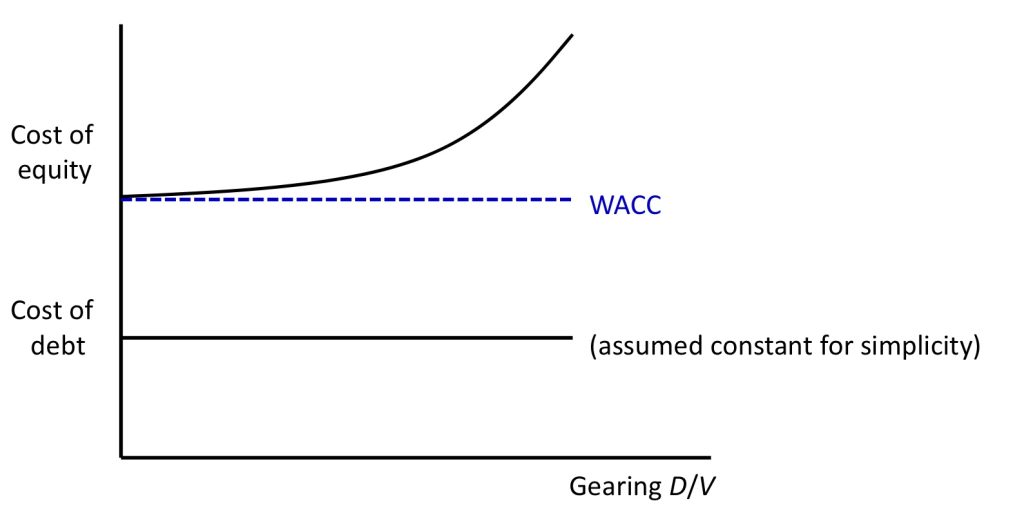Fiscal Policy also helps to get out of the liquidity trap.
Ricardian Equivalence in the Cash-in-Advance Model
Ricardian Equivalence states that the government finance the government spending, \(g_t\), by debts or taxes is irrelevant.
Consider tax, \(T_t\), as government steals money from the private sectors. Then, borrowing money is the same, because the government needs to finance the repayments by taxes as well. Government repay with one hand and steal (or tax) the same amount with the other hand. Thus, funds lent out to the government will never be given back.
Therefore, borrowing is the same as tax. However, this is not true sometimes, because debts and interest can help smooth consumption.
The Ricardian equivalence cannot be shown in the Cash-in-Advance model because tax and debts won’t be shown in the Euler equation, once markets clear and model achieves the equilibrium.
$$ u'(y_t-g_t)=\beta(1+i_{t+1})\frac{p_t}{p_{t+1}}u'(y_{t+1}-g_{t+1}) $$
$$ p_t y_t=m_t -x_{t+1} $$
and \( x_{t+1}\geq0, i_{t+1}\geq0, x_{t+1}\times i_{t+1}=0\).
Clearly, no taxes and debts appear in the equations ( as tax and debts are represented by the government spending).
Fiscal Policy
Recall the model in a liquidity trap,
$$ u'(\hat{y})=\beta \frac{\hat{p_t}}{m’}y’u'(y’) $$
With fiscal policy this would be,
$$ u'(\hat{y}-\underbrace{g}_{Government\ Spending})=\beta \frac{\hat{p_t}}{m’}y’u'(y’) $$
A interesting phenomena appears that \(\uparrow g \Rightarrow \uparrow\hat{y}\). Also, government spending would induce a 1-to-1 increase in current output, because the RHS is unchanged.
The multiplier must exactly equal one, because of Ricardian equivalence.
Intuition:
- Governemnt taxes or borrows \(\hat{p_t}\times g\) units of money.
- This means that agents reduce hoardings, \(x_{t+1}\), with precisely \(\hat{p_t}\times g\) units.
- The government demands \(g\) units of output, and consumers still demand \(c\).
- Output is then \(\hat{y}=c+g\). (if \(\uparrow g\), then \(\uparrow\hat{y}\).)
- The argument relies on a horizontal Aggregate Supply cureve. That is there is slackness in the economy. The economy is not fully employment (not achieve potential GDP) and also price is sticky in the very short run.
- Under unemployment, increase in government spending would make more people employed, and increase the total output at 1-to-1 level.
If not in a liquidity trap, then \(x_{t+1}=0\) and \(i_{t+1}>0\).
The Euler equation is,
$$ u'(\hat{y_t}-g)=\beta (1+i_{t+1}) \frac{p_t}{p_{t+1}}u'(y_{t+1}) $$
A rise in \(g\) leads to a rise in \(i_{t+1}\), and the multiplier is zero. Consider the crowding-out effects that increase in government spending induces an increase in government debts (demands in the loanable fund market increase), and thus reduce the demand of investment from the private sector (increase in interest rate leads to increase in supply along the supply curve but not shift the curve).
Intuition:
- Outside of a liquidity trap. agents do not hoard money. \(x_{t+1}=0\).
- The oruvate sector is happy to do this at a higher interest rate.
- Fully Crowding Out.
P.S. See further study about the multiplier effects and crowding-out effect.
Multiplier > 1 ?
A number of reasons to make the multiplier be greater than one.
One of the reasons is unemployment persistence.
Suppose now the outputs is produced as \(y_t=z_t l_t\). Labour supply is inelastic and is normalised to be one. I would also assume \(z_t=1\) for simplicity.
If there is a demand shock with rigid nominal wages, then we have \(\hat{y}=z_t \times l_t<z_t \times 1\), and there would be unemployment, \(u_t=1-l_t\).
Now we include persistent unemployment/ In particular, I assume that \(l_{t+1}=l_t^{\alpha}\), with \( \alpha \in [0,1)\).
The Euler Equation is then,
$$ u'(\hat{y}-g)=\beta \frac{\bar{p_t}}{p_{t+1}}u'(y’) $$
$$ u'(\hat{y}-g)=\beta \frac{\bar{p_t}}{m’}y’u'(y’) $$
$$ u'(\hat{y}-g)=\beta \frac{\bar{p_t}}{m’}z’l’u'(z’l’) $$
$$ u'(\hat{y}-g)=\beta \frac{\bar{p_t}}{m’}z’l^{\alpha} u'(z’l^{\alpha}) $$
By applying \(z_t=1\), the Euler equation is then,
$$ u'(\hat{y}-g)=\beta \frac{\bar{p_t}}{m’}z'{\hat{y}}^{\alpha} u'(z’ {\hat{y}} ^{\alpha}) $$
Then, we can assume the utility function is isoelastic \(u(c)=\frac{c^{1-\sigma}-1}{1-\sigma}\), and apply the implicit function theorem to the Euler equation, then we can get,
$$ \frac{\partial{\hat{y}}}{\partial{g}}=\frac{1}{1-\alpha (1-\frac{1}{\sigma})} $$
That implies the impacts of government spending on output depends on \(\alpha\) and \(\sigma\). The derivative is greater than one based on our assumptions of parameters.
Intuition:
- Governemnt taxes or borrows \(\hat{p_t}\times g\) units of money.
- This means that agents reduce hoardings, \(x_{t+1}\), with precisely \(\hat{p_t}\times g\) units.
- The government demands \(g\) units of output, and consumers still demand \(c\).
- Output is then \(\hat{y}=c+g\), and the unemployment must fall \(l_t \uparrow\). (P.S. \(\uparrow g \Rightarrow \uparrow \hat{y} \Rightarrow \uparrow l_t\), coz \(y=zl\) ).
- As \( l_t \uparrow\), we have that \(l_{t+1}\uparrow\) and \(y_{t+1} \uparrow \). (by presistent employment.)
Then, the loop starts asthe following:
- Since \(y_{t+1} \uparrow\) the fture looks brighter!
- Individuals want to consume more and hoard less, so \(c_t \uparrow\) and \(\bar{y}\uparrow\)!
- Output increases even more, and the unemployment rates fall again, so \(y_{t+1} \uparrow\) even more.
- This makes the future look even brighter, so there is more spending and so on.

